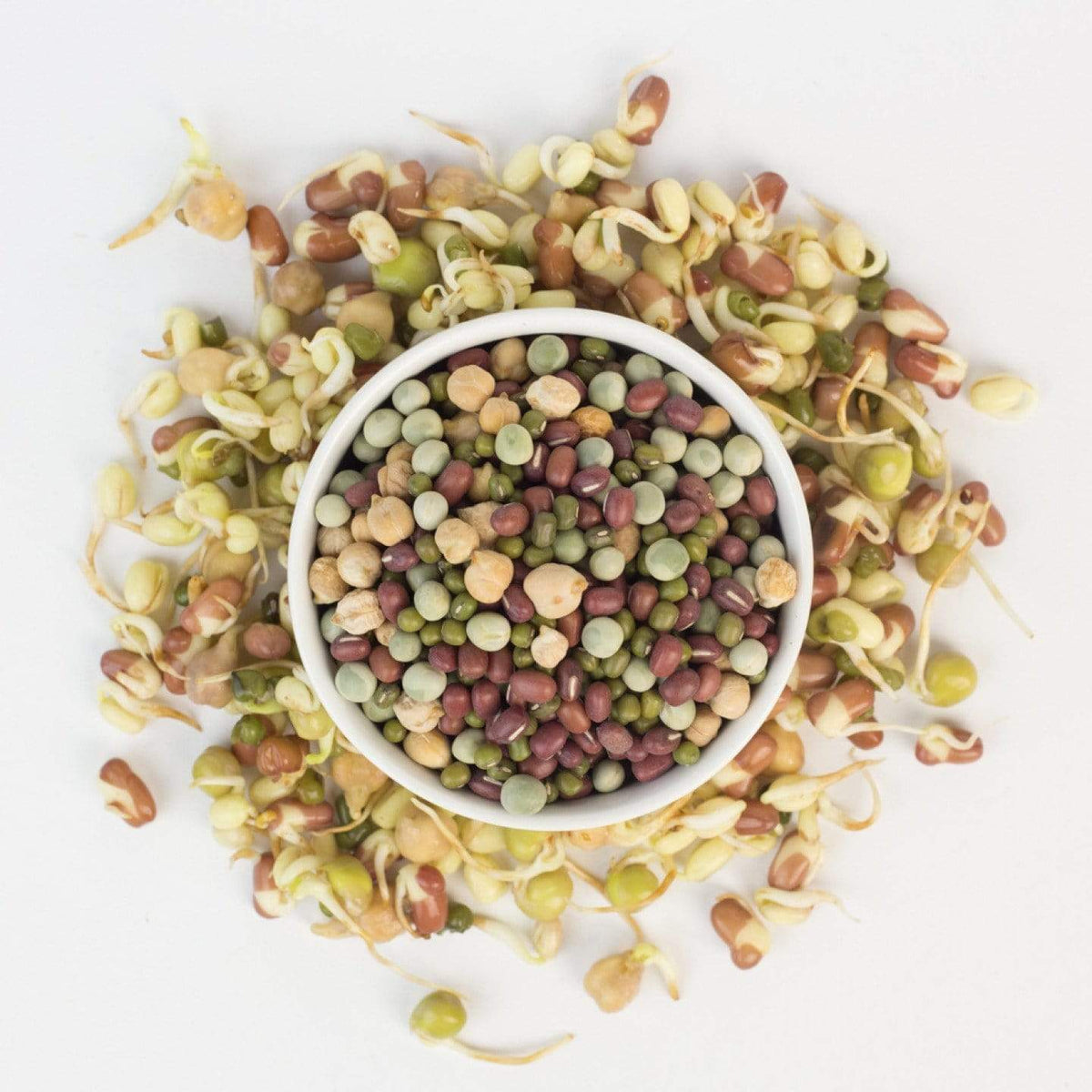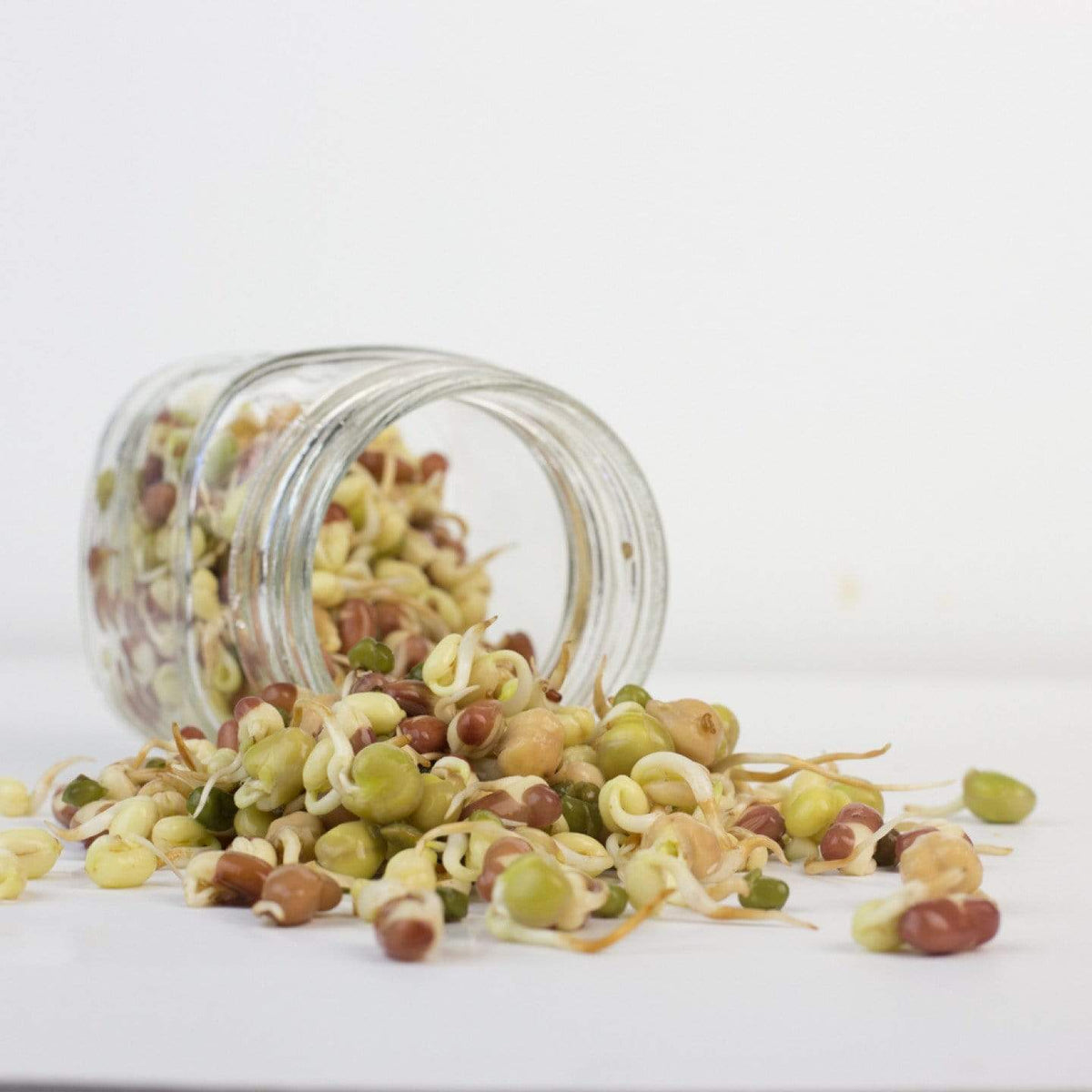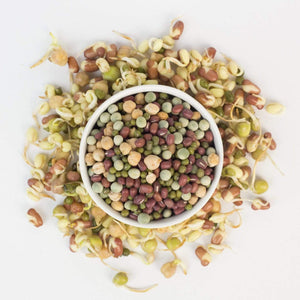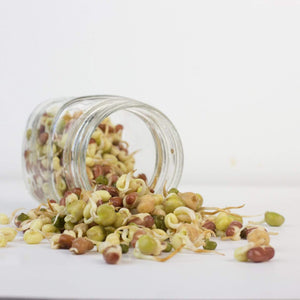
Clover sprouts are similar in look and taste to alfalfa sprouts, but are a bit milder in flavor. Use red clover seeds for sprouting, as white clover sprouts can have a bitter, earthy taste. Before you begin, make sure you have the right sprouting equipment clover seeds.
INSTRUCTIONS FOR SPROUTING CLOVER SEEDS
- Rinse 2 tablespoons clover seeds, removing any debris or floating matter.
- Place clover seeds in a quart jar or other sprouting container. Add ¼-½ cup cool water, cover with a sprouting screen or mesh sprouting lid and soak 8 hours or overnight. A humid environment will help the seeds germinate faster, but make sure you’re being safe. Learn more about safely sprouting seeds here.
- Drain all water off the seeds.
- Invert the jar over a bowl at an angle so that the seeds will drain and air will be able to circulate.
- After about 8 hours of draining, rinse and drain again.
- Repeat rinsing and draining 2-3 times daily.
- Tiny sprouts should begin to form in about 3 days. Once sprout tails appear, move the sprout container to indirect light for growing green leaves. Avoid direct sunlight.
- Continue rinsing and draining 2-3 times daily for another 2-3 days, or until sprouts have grown to around 3 inches.
- Once sprouts have reached their desired length, drain well, remove any remaining hulls, and enjoy immediately or transfer to a covered container.
Sprouts will keep in the refrigerator for several days.
TYPES OF CLOVER SPROUTS
There are a variety of clover sprouts to choose from and each kind are a good source of vitamins.
Red Clover Sprouts
The red clover sprout, which we recommend using in the above instructions, taste similar to alfalfa sprouts but have a slightly different flavor. They are mild in flavor and crunch, creating a perfect addition to your meal. Red clover sprouts have a long, thin base that transitions from white into a green top.
White Clover Sprouts
This sister sprout looks very similar to the red clover sprout, but the white clover sprout is larger and has thicker leaves. It has a slender stem that also transitions from white to green when it grows. The white clover sprouts are more bitter than red clover sprouts, but the taste depends on the maturity of the sprout.
Not sure which clover seed you want to sprout? Take a look at our guide to choosing seeds for sprouting.
CLOVER SPROUTS ARE A GREAT SOURCE OF VITAMINS, FIBER, AND PROTEIN
Despite their slight differences in appearance, the red and white clover sprouts contain the same health benefits. Clover sprouts are rich in vitamins A, B3, K and C. Both vitamin A and B can support healthy skin, while vitamin K and C can aid in healing and overall health.
The clover sprouts are also rich in minerals, such as iron, calcium, potassium, copper, magnesium, zinc, phosphorus, and manganese. Minerals are important in keeping the body healthy and energized. They affect the health of your bones, muscles, heart, and brain. Adding clover sprouts to your diet can help you make sure you’re eating the minerals, vitamins, and protein your body needs.






















